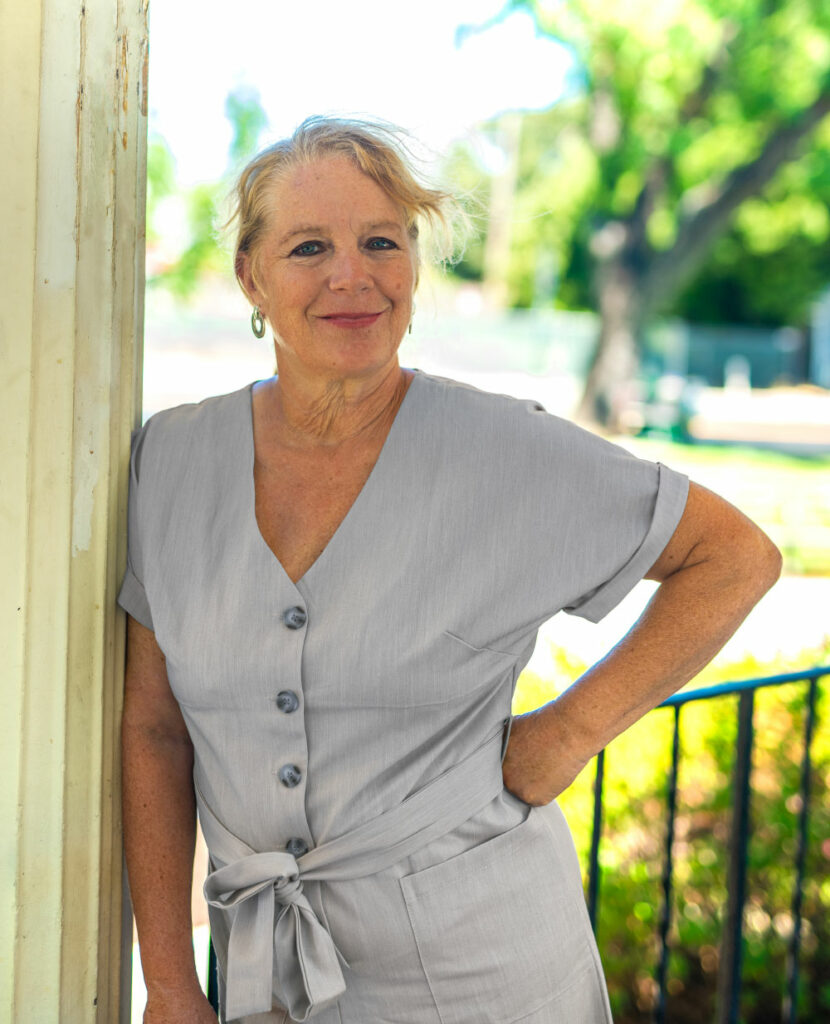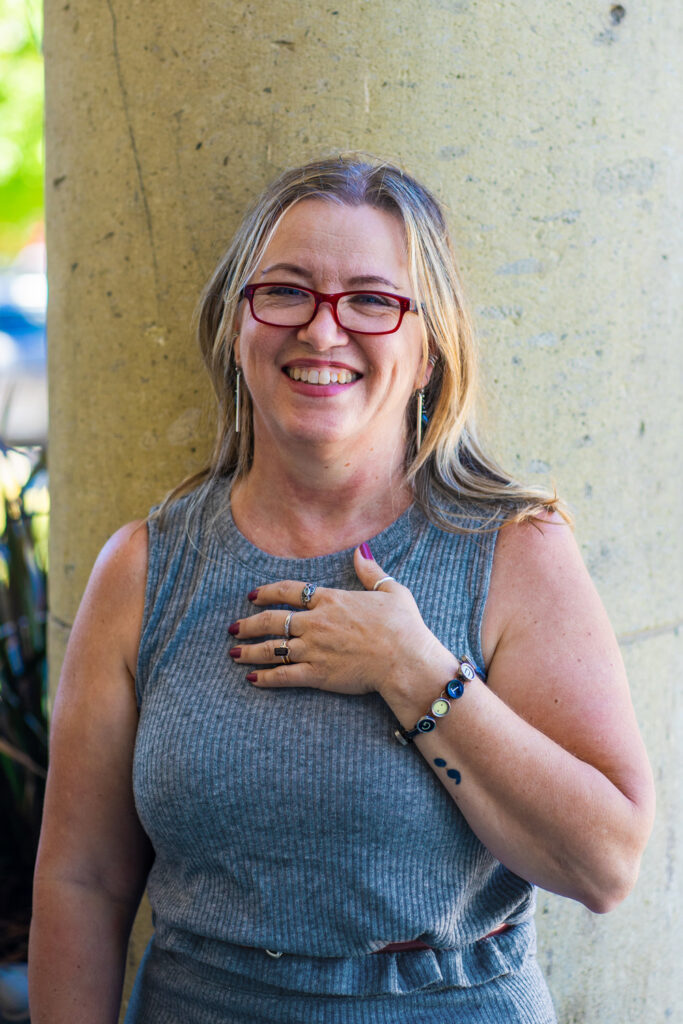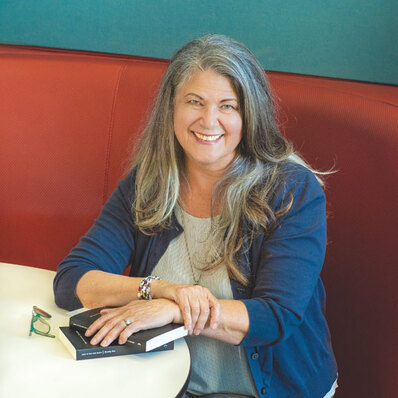Interview by Dorothy Rice
It was a pleasure to interview Vicki DeArmon, publisher of Sibylline Press, a new venture with a unique, ambitious, and important mission: to find, support, collaborate with, and publish talented women authors over fifty—writers who otherwise might not find a place for their work in the current marketplace. The press takes its name from the ancient Sibyls, older women whose oracular utterances contained wisdom captured in scrolls consulted by Roman leaders.
DeArmon is an industry pro. She founded Foghorn Press at 25 and served as president of the San Francisco Bay Books Festival for three years, leading to the creation of the Bay Area Book Council. She also founded the Independent Travel Publishers Association and has worked in virtually every other aspect of the industry throughout her career in the publishing industry—from teaching, marketing, speaking, creating the Bay Area’s Copperfield Books’ nationally recognized author events program, and more. Vicki also created All Things Book, an editorial and production house for authors where she worked for five years.
For all you dog lovers (me included), Vicki also produced the World’s Ugliest Dog Contest, growing it from 300 attendees to 5,000 at the Sonoma-Marin Fairgrounds.
Her partners at Sibylline Press are executive editor Julia Park Tracey; design director Alicia Feltman; and Rights & Special Sales Director Anna Termine. Their first slate of six books (three memoirs and three novels) is forthcoming in fall of 2023. Visit their website for details.

Dorothy Rice: Was the idea for Sibylline Press one you’d been working on for a long time?
Vicki DeArmon: Not at all. Though it was inevitable I think. My solution to everything is . . . start a company. We noticed women of a certain age were not getting their books published and that meant we should start one that would publish that work. Over thirty years ago, armed with an advance on my credit card, I started Foghorn Press in San Francisco. These were the early days of Silicon Valley when the invention of the computer meant everyone suddenly could design and publish books. It was a fabulous era for emerging small presses, all operating on innovation, energy, and creativity. Never mind that we were working 100-hour work weeks. Within years, Foghorn was one of the top ten publishers for our distributor. Later I sold the company to Avalon Books, which is now owned by Hachette. I’ve been in the business of publishing ever since. Recently, I may have thought of retiring, but that entrepreneurial spirit still rules me. And I’m thrilled every day to work.
DR: You and Julia Park Tracey first came up with the idea for the press. Tell me about those initial discussions.

Julia Park Tracey
VD: I’ve known Julia for 40 years. We met waiting tables, or maybe she was a cocktail waitress back then when we both were attending college in San Francisco. Which is to say, we’ve been friends for a very long time. She had written this wonderful book and agents were looking at it. Then Covid hit and she was ghosted as so many authors were. It felt personal though, like older women weren’t being given chances.
So we decided to start a publishing company to set this right. The first thing we did was retreat to a hotel where we brainstormed for two days, creating Sibylline Press, along with Sibyls (all the women of a certain age) and then Muses (fiction authors) and Oracles (memoir authors). We discussed future lists too, thinking about adding a romance line, the Sirens—older women want romance in their lives too.
It was important to develop our website and a social media presence so we could solicit manuscripts. We brought in the best people to be our partners, women we’d known for years in the book industry, and we used our connections and friends in the industry and the skills and experience we’d amassed over 30-plus years to make all of this happen, fast.
Initially, we received submissions of twenty manuscripts, out of which—thank goodness—we found our six, all excellent. That’s an amazing ratio and we attribute it to the fact that these six were risk-takers and willing to bank on themselves and that allowed them to submit when others were in a wait-and-see posture. They believed in themselves.
We take submissions year-round and have already secured our Spring 2024 list. Now reading for Fall 2024 and beyond. We encourage Hippocampus readers to send us their nonfiction narratives, Full manuscripts only please, no queries. Everything we need is described on the webpage.
DR: Any preferences or suggestions in the nonfiction arena?
VD: We are looking for fresh, authentic stories and voices in memoir and narrative nonfiction. We want confident writers, writers who are confident in their stories, and in themselves.
We are not interested in victim-centric perspectives. Ideally, our narrators have emerged from the other side of the situation they are writing about and are now able to find meaning with distance, grace, and humor. What did you learn?
We’re looking for a great story, told in a unique voice. That’s the most important thing. We’re not interested in self-help; but empowerment, yes. I personally really enjoy humor, a lot. We don’t see enough of it in manuscripts. Spring 2024’s line-up of books is particularly funny; I love that.
Sibylline’s executive editor Julia Park Tracey is a fantastic developmental editor, but time doesn’t allow for that for every book. We prefer your work be as close to final as possible. And yes, if you can, have your work edited first.
DR: A question writers may have is about the requirement that they provide some of the funding for marketing. Do you consider Sibylline a hybrid publisher?
VD: The simple answer is, no, we are a traditional publisher. We make our money on the sale of books, not from authors. We ask for a $3,000 upfront contribution from the author which we use to market the book, along with an ongoing monthly marketing contribution for the first two years, all of which is fully reimbursed from initial book sales/royalties.
We ask our authors to invest their money in themselves. At this age (over 50), most authors have the resources to contribute funds to ensure their book sells once it hits the marketplace. The marketing budget for each book includes the author marketing co-op, plus what Sibylline contributes and this makes possible book tours, launch events, publicists, and the full menu of what can make a book sell.
Authors receive an accelerated royalty until their contribution is paid back, then the royalty schedule reverts to a more standard royalty schedule, all of which is outlined in the author’s contract. Sibylline pays for all book production and distribution costs. There are no costs to authors, other than their marketing co-op which goes straight to their own book.
DR: What makes Sibylline unique?
 VD: So many things. Our focus of course—we exclusively publish women authors over 50. We provide an opportunity to get involved with a new publishing house that has committed to including its authors in the process of publishing, everything from cover design to the marketing plan.
VD: So many things. Our focus of course—we exclusively publish women authors over 50. We provide an opportunity to get involved with a new publishing house that has committed to including its authors in the process of publishing, everything from cover design to the marketing plan.
Our team is amazing. As mentioned in an article in Publisher’s Weekly, we have a cumulative track record of over 125 years in publishing, from editing, production, and design, to licensing and rights, sales, and marketing. We have all an author’s bases covered. For instance, our rights specialist actively pursues foreign, film, and TV rights for our titles and has already secured audio rights for our titles.
We’re dedicated to our authors’ success, providing them with social media training, a bank of social media posts, and an author retreat to prepare our authors for interviews and book tours.
Our books are distributed via PGW, the top distributor in the country for small presses. They are selective about whom they represent so we are proud they agreed to distribute Sibylline’s books to bookstores and online retailers. With them, we are confident our titles will be everywhere they should be.
DR: Let’s talk a bit about the vetting and submissions process at Sibylline Press.
VD: We respond to submissions within three months, or less, usually under six weeks. One of us will begin reading each submitted manuscript within one to two weeks. If we begin to receive tons of manuscripts, turnaround times may change, but those are our general time frames for now.
DR: That’s fast! It’s been such a pleasure to talk with you. Sibylline Press, you, and your team are to be congratulated. Any final thoughts for our readers?
VD: Thanks so much to Hippocampus Magazine for this opportunity. I hope to see some manuscripts from your readers.
This is the right time for Sibylline Press, and the rising number of women writers, who have struggled to find traditional publishing avenues for their work. These are the voices we represent.
It feels as if all the paths we’ve taken have led both me and Julia Park Tracey to create this publishing company. I’ve been in the book publishing industry for almost 40 years now and I know that the industry is full of women. I see this every day. Statistics back me up with 78% of all book publishing staff being women and 59% of all book publishing execs. And we all know the high percentage of women who are readers. It’s time the number of books that get published and into the hands of readers—great books, important books, page-turning books—reflect those percentages. At Sibylline, we are thrilled to be part of that equation.
 Dorothy Rice is a writer, freelance editor, and the managing editor of the nonfiction and arts journal Under the Gum Tree (before joining the Gum Tree team, she was a Hippocampus essays reader for several years.) In previous lives, Dorothy cleaned up toxic waste sites and abandoned tire piles with the California EPA, earned an MFA in creative writing at 60, and raised five children. She has published two memoirs with small presses (GRAY IS THE NEW BLACK and THE RELUCTANT ARTIST). Her essays and flash (fiction and nonfiction) have been featured in many places, including Hippocampus Magazine, The Rumpus, the Brevity Blog, Literary Mama, and Five South.
Dorothy Rice is a writer, freelance editor, and the managing editor of the nonfiction and arts journal Under the Gum Tree (before joining the Gum Tree team, she was a Hippocampus essays reader for several years.) In previous lives, Dorothy cleaned up toxic waste sites and abandoned tire piles with the California EPA, earned an MFA in creative writing at 60, and raised five children. She has published two memoirs with small presses (GRAY IS THE NEW BLACK and THE RELUCTANT ARTIST). Her essays and flash (fiction and nonfiction) have been featured in many places, including Hippocampus Magazine, The Rumpus, the Brevity Blog, Literary Mama, and Five South.


